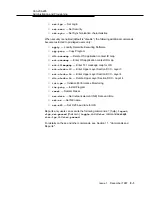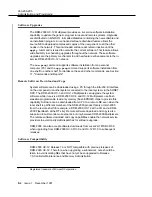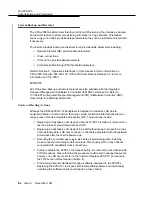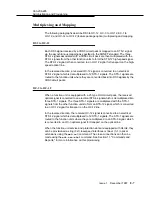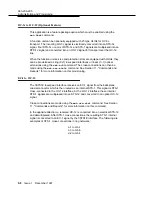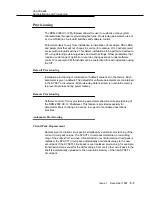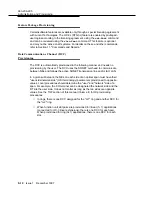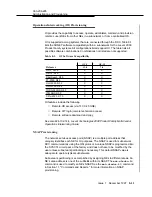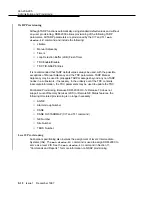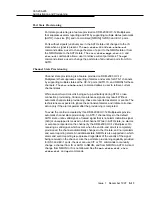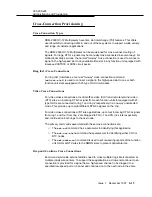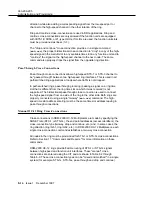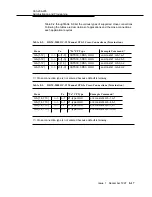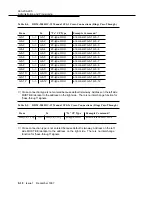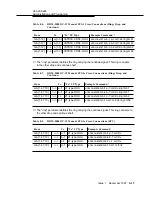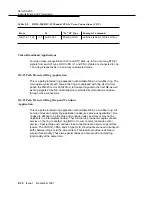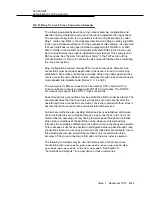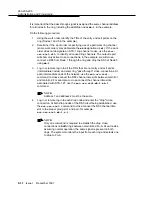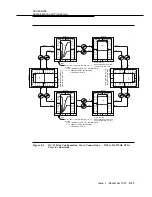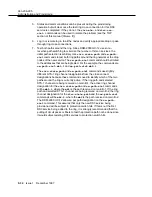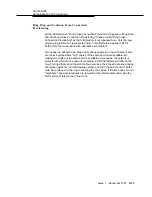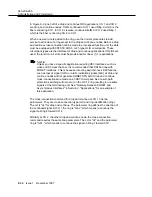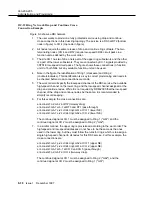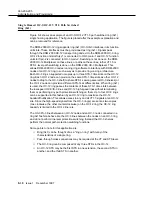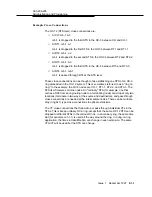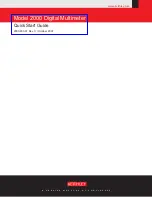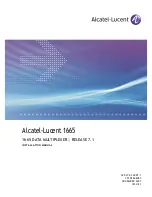
363-206-295
Administration and Provisioning
8-16
Issue 1
December 1997
direction while also adding a corresponding signal from the low-speed port or
channel to the high-speed channel in the other rotation of the ring.
Drop and continue cross-connections are used in DRI applications. Drop and
continue cross-connections are only allowed if the function units are equipped
with 3STS1E, 3DS3, or 21-type OLIUs. If OLIUs are used, the function unit slots
must be provisioned as linear (1+1).
The "drop and continue" cross-connection provides, in a single command
(
ent-crs
), the proper bidirectional cross-connection to "drop" a copy of the high-
speed signal in the main-B slot to any available time slot in any function unit and to
"continue" the signal on the high-speed channel to the next node. The same
command also properly drops the signal from the opposite ring direction.
Pass-Through Cross-Connections
8
Pass-through cross-connections allow a high-speed STS-1 or STS-3 channel to
be "passed-through" between two high-speed ring interfaces. This is used in all
path switched ring applications at nodes where traffic is not dropped.
In path switched rings, pass-through grooming (passing a signal on a ring time
slot that is different from the ring time slot on which it was received) is not
supported. The bidirectional pass-through cross-connection is used to connect
the high-speed signal from one side of the ring to the other side. Both rings are
properly connected, using a single "twoway" (
ent-crs
) command. The high-
speed time slot address entering must be the same time slot address leaving in
pass-through connections.
Manual OC-12 Ring Cross-Connections
8
Cross-connections in DDM-2000 OC-12 Multiplexers are made by specifying the
SONET rate (STS-1 or STS-3c), the end point addresses (access identifiers), the
cross-connection type (twoway, drop and continue, etc.) and, in some cases, the
ring direction (ring=mb1, ring=mb2, etc.). In DDM-2000 OC-12 Multiplexers, each
single cross-connection command establishes a two-way cross-connection.
All nodes in the ring must be provisioned for STS-1 or STS-3c cross-connections.
Refer to Section 11, "Commands and Reports," for more information on these
commands.
DDM-2000 OC-12 rings provide flexible routing of STS-1 or STS-3c signals
between high-speed and function unit interfaces. These "manual" cross-
connections are entered using the CIT and are shown in Table 8-2 through
Table 8-9. These cross-connection types can be "mixed and matched" in a single
system (for example, STS-1s, STS-3cs, pass-through and drop and continue).


